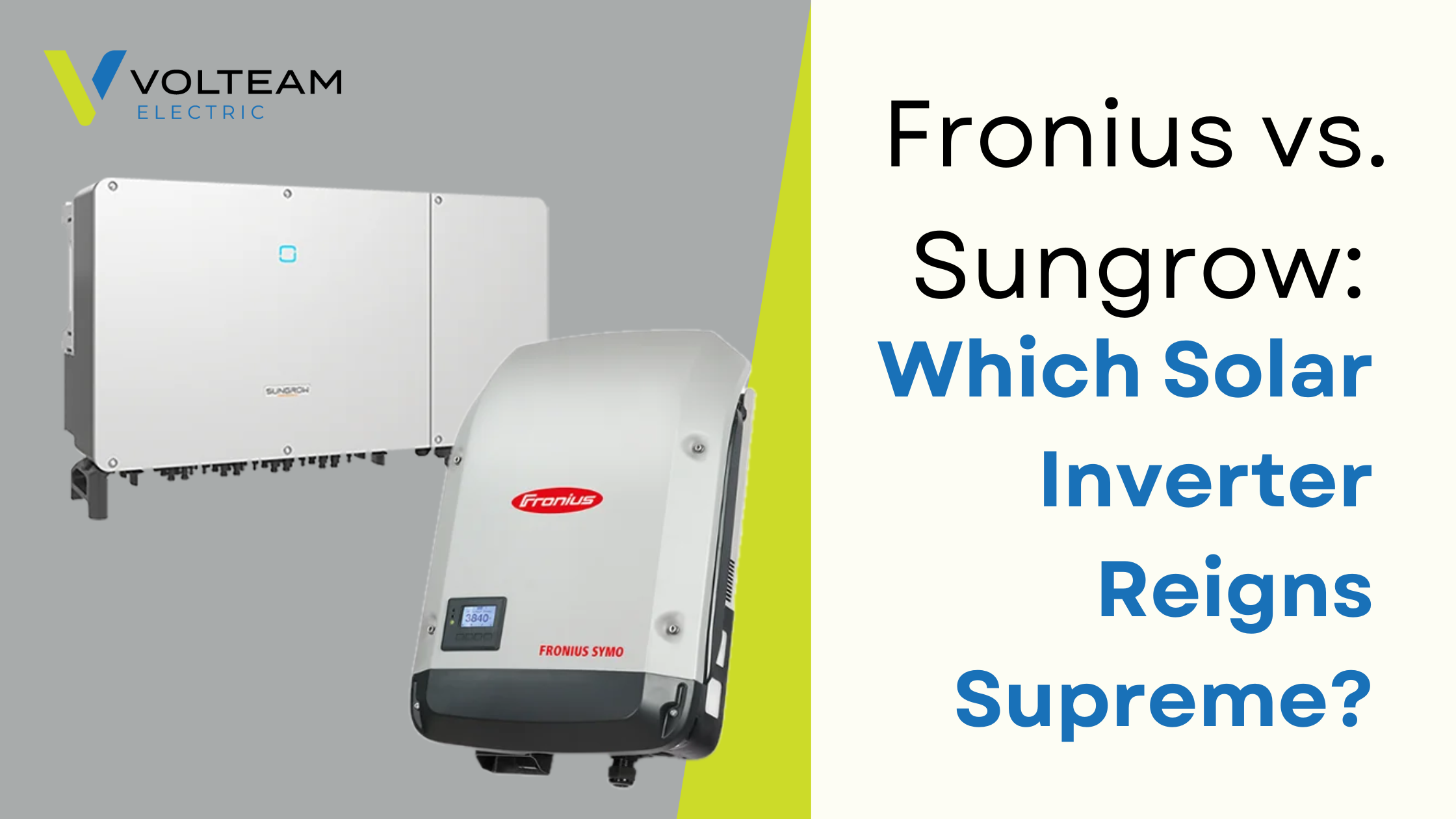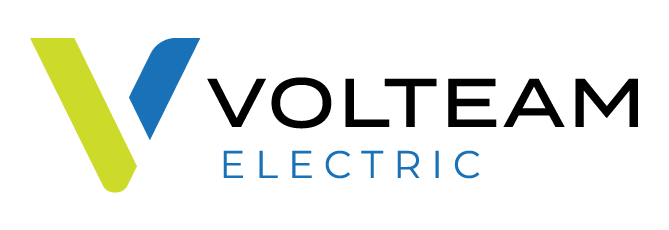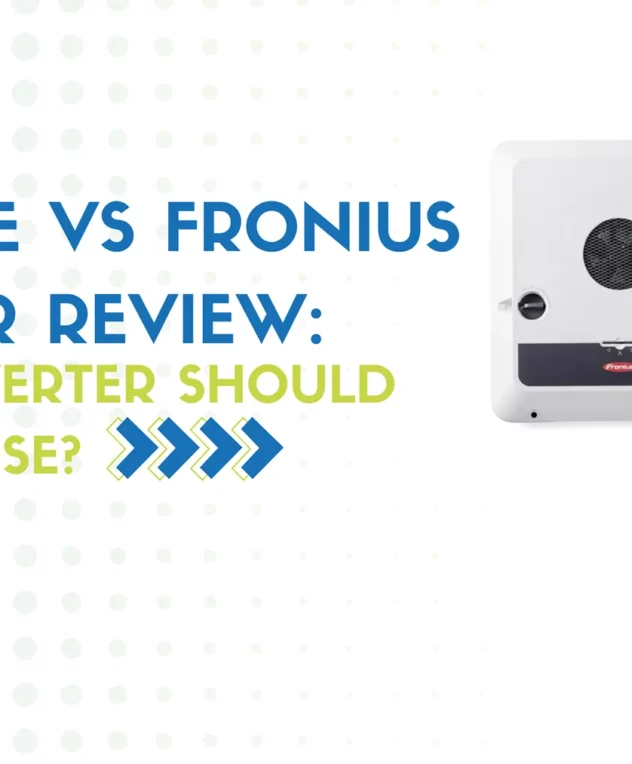
Fronius vs. Sungrow: Which Solar Inverter Reigns Supreme?
With the large role that inverters play in solar power systems, choosing the right solar inverter for your system is crucial. In Australia, Fronius and Sungrow are two of the biggest solar inverter brands to consider. To help you make an informed decision, we’ll compare these two products in terms of efficiency, durability, price, and warranty. The goal is to answer which of these two is better for Australian homeowners and businesses in 2025.
Brand Overview — Sungrow vs Fronius 2025
Learn more about Sungrow and Fronius and the full extent of what they’re offering to homeowners and businesses with solar power systems.
Sungrow Inverter Review: Affordable Alternative Without Compromising Quality
The rise in solar power installation can be attributed to the increasing affordability of essential solar components without compromising aspects of quality. Such is the case with Sungrow and its range of solar inverters, from a string inverter to microinverters. Originating from China, the company is recognised as one of the global leaders in renewable energy technology.
As a whole, Sungrow is a global brand best known for its cost-effective solar solutions. It also has a substantial market presence in Australia; Sunwiz, a leading solar industry authority in the country, has just named Sungrow the No.1 Inverter Manufacturer and No.1 Residential Battery Manufacturer in Australia for 2024.
As of this writing, they’re the second largest inverter maker in the world, after Huawei inverters. From solar batteries to inverters, the company continues to evolve via advanced technology, helping make solar energy systems become more accessible.
Fronius Inverter Review: Bringing Innovative Tech to Australian Homes
As a solar company, Fronius needs no introduction when it comes to solar inverters. Its reputation for offering reputable products has also made it the more appealing choice for homeowners who prefer the lasting durability that Fronius’ premium inverters are globally known for. Originating from Austria, Fronius inverters prioritise quality and reliability to provide impressive longevity. Equipped with advanced features, Fronius is the ideal choice if you have a large solar power system or if your home requires high energy output. In Australia, Fronius is one of the most trusted inverter brands for homeowners and businesss alike.
Key Comparison Factors
A comprehensive overview of performance and efficiency, reliability and warranty, cost and value, smart features and monitoring, and lastly, compatibility and flexibility.
Sungrow vs Fronius 2025: Performance and Efficiency
Sungrow inverters are a popular choice in Australia because they provide high-quality options that don’t break the bank. Much like Fronius inverters, Sungrow’s products are also renowned for their high efficiency rates without the staggering upfront costs.
Here are Sungrow’s remarkable features, ensuring you get the most out of your solar panels:
- Industry-Leading Efficiency: Sungrow inverters offer competitive efficiency of up to 98.7%.
- High DC/AC Ratio: Sungrow inverters deliver a high DC/AC ratio of up to 1.3. A good inverter needs to have a DC/AC ratio of 1.25 and Sungrow products are able to top that, ensuring efficient energy conversion and optimal system performance.
- Wide MPPT Voltage Range: With a wide MPPT voltage range, your system can keep harvesting high energy yields from solar panels even when presented with challenging conditions like shading or fluctuations in temperature.
- Low-Noise Operation: Sungrow inverters are known to be quieter than Fronius inverters, a big plus for those who prefer their solar systems to produce less sounds. Between Goodwe and Fronius, the latter also produces more noise.
- IP65/66 Ratings: Sungrow inverters are built to withstand external conditions, making them suitable for outdoor installations.
As for Fronius inverters, they employ features that maximise a solar system’s energy output and enhance overall performance. Here are key benefits you should know about:
- Maximum Power Point Tracking (MPPT): Inverters with advanced MPPT provide maximum energy harvest.
- Competitive Efficiency: With an efficiency rating reaching up to 98.2%, homeowners and businesses can rest assured that they can get the maximum return on investment.
- Active Cooling Technology: On top of its IP65 rating, Fronius inverters are designed to retain remarkable performance and durability under high temperatures and challenging conditions.
So, which one is better in terms of performance? Here’s where it gets tricky — both Sungrow and Fronius solar inverters are reputable brands in terms of performance and durability. The former is durable enough to withstand harsh conditions, especially the newer models, while the latter is built for long-term reliability. Overall, Fronius has a better track record when it comes to durability.
As for their performance, Fronius inverters are known for delivering high efficiency rates, and so is Sungrow. The latter, however, impresses with a higher maximum efficiency, up to 98.8% in some models. Fronius’ Active Cooling Technology, meanwhile, guarantees longer lifespan and consistent performance even under high temperatures.
Sungrow vs Fronius 2025: Reliability and Warranty
Sungrow is a popular brand in the world because its products are designed to be durable without breaking the bank. Partnering reliability with affordability, it’s easy to see why Sungrow inverters are top picks by Australian homeowners and businesses.
On the other hand, Fronius’ strongest feature, which also proves to be its most appealing one, is its long-lasting durability. Adhering to strict European standards, Fronius inverters are built and designed using high quality materials that guarantee strength and resilience.
When it comes to warranty coverage, both Fronius and Sungrow inverters offer a 10-year warranty, giving customers their needed peace of mind when investing in solar power. But while Fronius offers comprehensive coverage, including repairs and parts, you may require additional documentation for claims with a Sungrow warranty.
In terms of warranty, Fronius has a slightly better reputation for hassle-free claims, although the 5 years full + 5 years parts-only warranty is now below the market standard. Nonetheless, it’s worth noting that Sungrow’s growing presence in Australia means customer support is readily accessible.
Sungrow vs Fronius 2025: Cost and Value
Sungrow is clearly the more affordable option with prices ranging from $1,200 to $2,500, depending on capacity. You’ll have to spend more when opting for Fronius with prices typically ranging from $2,000 to $3,500 for a standard inverter.
But which inverter brand gives you a better ROI? Sungrow requires a lower upfront investment, resulting in a typically faster ROI (within 5 to 7 years), but it may come with higher maintenance costs over time to keep it running smoothly.
This is where Fronius shines. Despite the higher upfront costs, you’d be getting your money’s worth in the long run. With guaranteed durability and longevity, plus better thermal management, downtime and maintenance costs for Fronius inverters are lower.
Sungrow vs Fronius 2025: Smart Features and Monitoring
Sungrow’s designated monitoring system is iSolarCloud, which allows customers to track their energy usage and their system’s performance using a user-friendly monitoring platform for real-time data. Rich in smart features, Sungrow inverters offer touch-free commissioning and remote firmware upgrade for easier setup and seamless updates, allowing solar PV owners both time and resources.
Sungrow’s string inverters are also best known for their Smart IV curve diagnosis feature, an advanced system designed to monitor your solar array’s performance. Upon inspection, it spots any issues for proactive maintenance and optimised power generation.
As for Fronius, being a global brand known for its performance and durability, every inverter is built with monitoring and digital tools to service your PV system with ease. Monitoring can be done online or via an app. Fronius’ advanced features also include its Smart Metre, a monitoring device for measuring the energy consumption in your home. It integrates seamlessly with Fronius inverters, ensuring smooth monitoring.
In addition, all current-generation Fronius inverters are smart grid ready, specifically those in the SnapINverter and GEN24 Plus series. Sungrow’s latest models are also smart grid ready, but not the older or entry-level ones. Both brands offer wireless monitoring via WiFi.
Sungrow vs Fronius 2025: Compatibility and Flexibility
Sungrow delivers flexible PV string configurations, allowing greater versatility in the design of solar power systems. When it comes to compatibility with energy storage systems, Sungrow inverters are built to work seamlessly with Sungrow batteries, as well as other battery brands via AC coupling.
However, Fronius inverters are more flexible in terms of compatibility. The hybrid inverters, for instance, are highly flexible so that they work well with a wide range of third-party batteries. This all thanks to Fronius’ Multi Flow Technology, which allows AC and DC coupling of battery storage.
Both brands also have their respective hybrid inverters lineup. Fronius hybrid inverters win in terms of flexibility, smart integration, and premium performance, while Sungrow hybrid inverters are a better option when it comes to affordability and ease of use.
Pros and Cons Summary
For a side to side comparison between Sungrow and Fronius, check out this summary table:
| Sungrow Inverter Pros ✅ | Sungrow Inverter Cons ❌ |
|---|---|
| Lower upfront costs | Limited support for third-party batteries |
| Well-supported Australian office | Off-grid feature only available on select hybrid models |
| iSolarCloud: modern monitoring platform | Limited smart grid integration |
| Good-quality hybrids with AC coupling | Software is less customisable for advanced users |
| 10 years standard warranty (extendable) | Tech support may take longer to access |
| Fronius Inverter Pros ✅ | Fronius Inverter Cons ❌ |
| Long-term reliability | Higher upfront costs |
| Compatible with third-party batteries | Full off-grid support only on select models |
| Professional-level setup with advanced configuration tools | 5 years full + 5 years parts-only warranty is below the market standard |
| Advanced energy monitoring platform via Solar.web | Generates more noise than other brands due to active cooling |
| 5-10 years warranty that can be extended | Relies on third-party batteries |
| Good reputation and excellent installer support | More technical to configure, especially for hybrid or off-grid setups |
Expert Recommendation: Which One is Right for You?
Choose Sungrow if: You want an affordable, high-performing system with solid features. Sungrow inverters also have flexible PV String configurations, an important factor to consider because you’ll be needing greater versatility in the design of solar power systems. If cost-effectiveness is your priority, Sungrow is better.
Choose Fronius if: You prioritise premium quality, advanced monitoring, and long-term reliability. A reputable brand in terms of durability, Fronius inverters are better if you care more about future-proofing your solar power system.
Conclusion: Which Solar Inverter Is Best for You in 2025?
The answer to this question hinges on your specific needs, preference, and most importantly, budget. When considering the upfront costs, Sungrow is the clear choice being an affordable contender. It even boasts higher efficiency and lower noise levels.
But if you prefer a solar inverter that’s globally positioned as a premium product, Fronius might be the right inverter for you. It’s designed and built to last for many years to come with a more promising track record for durability and high performance.
Frequently Asked Questions
Both Sungrow and Fronius are excellent manufacturers of solar inverters, with Sungrow being on the affordable side. If you need your solar power system to be cost-effective, Sungrow offers affordable options. If you need your system to be future-proofed, Fronius is known for their long-lasting inverters.
Fronius is the most highly regarded inverter brand by installers, consistently picked by installers across Australia for its reliability. Sungrow inverters are also a popular choice for their durability and cost-effectiveness.
Yes, Fronius inverters work with solar batteries, especially when using their hybrid models. Fronius’ compatibility with third party batteries is even wider when compared to Sungrow.
Both Sungrow and Fronius inverters are built to last for more than a decade with Sungrow lasting 10-15 years and Fronius lasting 15-20 years, provided they receive proper maintenance over the years.
Need more time and materials to make a decision? Check out more guides here or call us at 1300 865 832 — we’re here to help you determine the best options that fit your solar needs.








